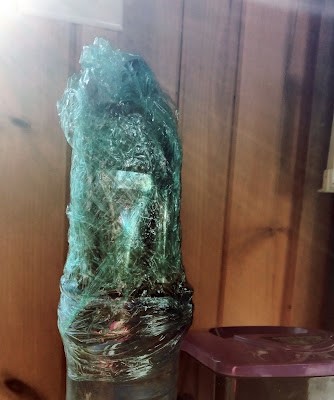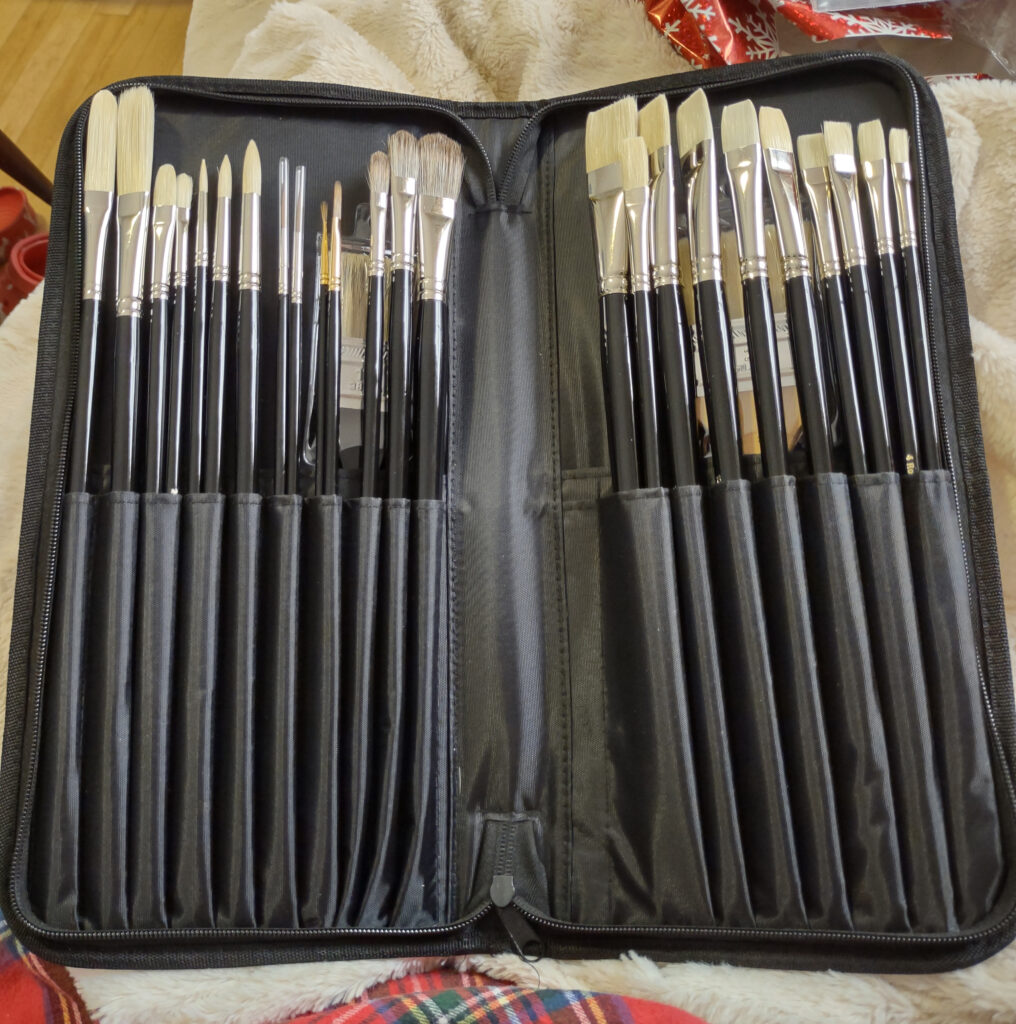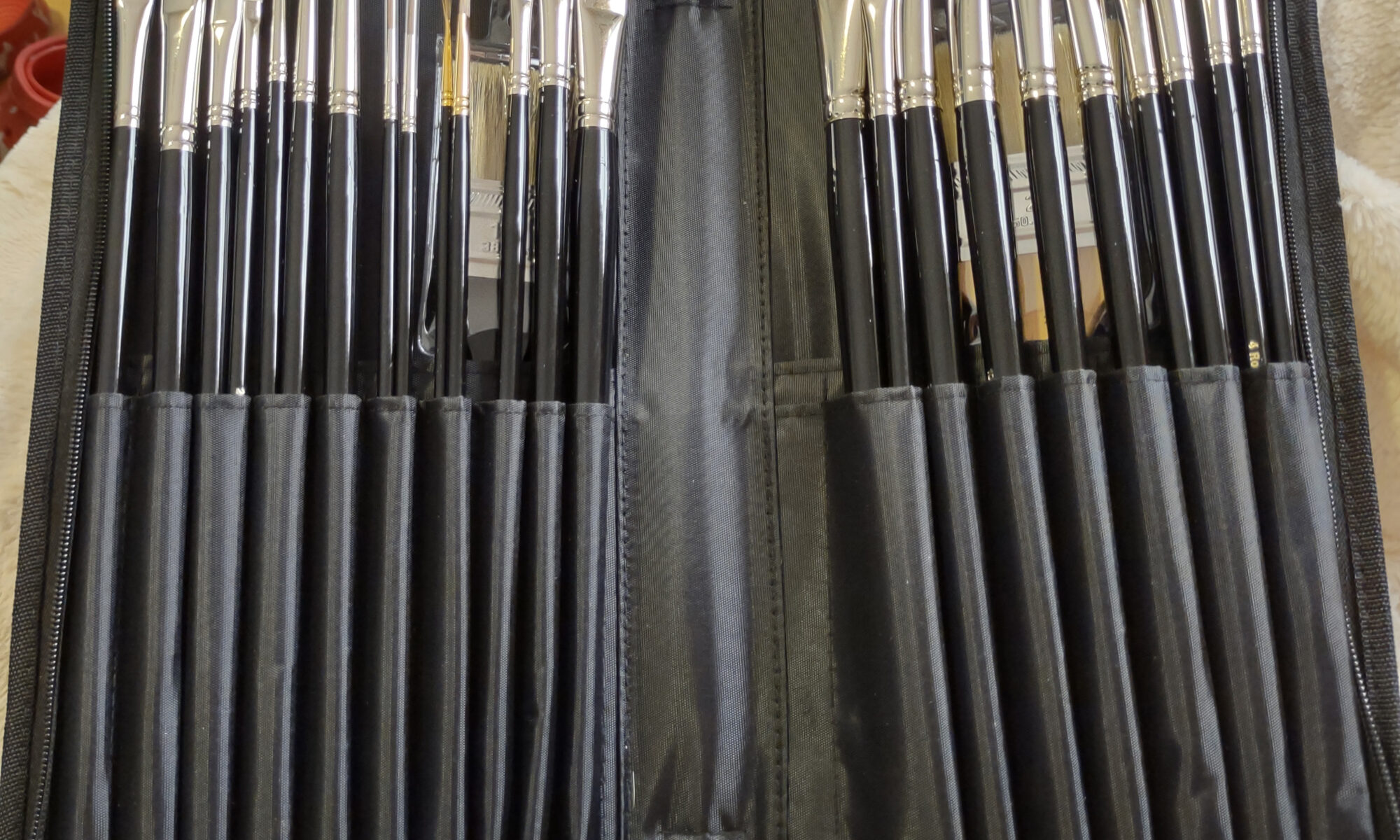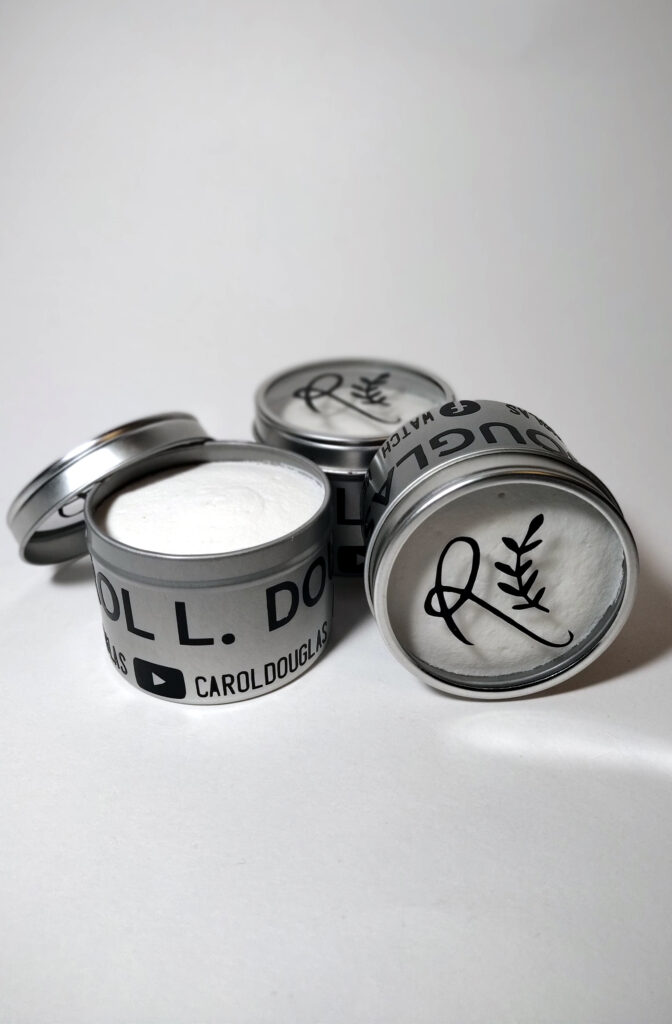Two of my most visited posts are Sandy demonstrating how to fold a plastic bag and my Youtube video on how to clean your brushes. With the advent of plastic bag bans you may have other ways to deal with your plein air trash, but we all still need to clean our brushes.
It’s especially hard to keep oil painting brushes nice when you’re on the road. There’s seldom a utility sink available, and it’s not nice to repay your hosts by washing brushes in their kitchen sink. In a pinch, I shower with mine, since they’re usually no dirtier than I am. Sometimes I wrap them in plastic and hope for the best. And that best, after a week in a hot car, usually isn’t very good.

A cardinal rule of brush care is to never let brushes stand on their bristles—in mineral spirits or water. That includes during painting. That’s one reason why a small, swinging solvent holder is a great idea—it tips over if you leave a brush in it.
Watercolor brushes
In general, watercolor brushes need to be rinsed when you’re done painting, shaped back into their proper form, then allowed to dry flat. They will dry just fine in a brush roll, but not in a sealed plastic container.
Pay particular attention to rinsing them if you paint with saltwater or use alcohol to prevent freezing.
Unless you’ve done something very silly, there’s never any reason to use soap; in fact, it’s not good for fine hair brushes.

Oil and acrylic brushes
For oils (and to a lesser degree, acrylics) brush care is serious business. It’s possible to clean acrylic paint out with running water alone, but soap won’t hurt hog bristle or synthetic brushes and it will save water.
Synthetic brushes are generally easier to clean than hog bristle brushes. This is the upside of synthetic brushes’ downside; they carry less pigment, so there’s less pigment to clean out.
Soap is not detergent.
Soap starts with a natural fat to which an alkali (like lye) is added. Detergents are synthetic cleaning compounds. They often have additional surfactants added to increase their oil-stripping qualities. Both allow oil to be lifted out with water, but soaps are gentler. That’s also why we don’t use detergent to wash our hair; it’s too good at removing oils.
Don’t leave brushes standing around dirty
The secret of brush-cleaning is to get to them fast. Get as many solids as you can out with mineral spirits; that will prevent clogging your sink. Thoroughly coat them with soap, inside and out, and wash them with a rag, not your bare hand. (Even the least-toxic of pigments shouldn’t be ground into your skin.) The brush is clean when the water runs clear, and not before.
If you left your brushes standing and they’ve started to harden up, detergent won’t work any better than soap at softening the mess. I sometimes pre-treat them with coconut oil when I can’t get the paint out.
Don’t expect heavily-used brushes to last forever. They’re made of hair and they wear out. In fact, most of my filberts started life as flats. But by cleaning your brushes regularly, you’ll ensure that they will last as long as is possible.
A plug for my daughter’s soap
My daughter Mary makes my brush soap. I offer it (in small batches) to my readers. Mary’s been offline as she prepped and sold her house, but she’s got her soap lab up and running again. You can order her soap here. “Your brush soap is seriously great. Better than Murphy’s or the pink stuff from Jerry’s. I can always ‘get a little more out’ with yours,” said my student, Mark Gale.
I’m in Britain on another lovely, long, blister-inducing hike. I’ve turned my phone off and while I’m gone, Laura will be running the office. Just email me as usual if you have questions or problems registering for a class or workshop. (Who am I kidding? She fixes all that stuff anyway.)
Reserve your spot now for a workshop in 2025:
- Advanced Plein Air Painting, Rockport, ME, July 7-11, 2025.
- Sea and Sky at Acadia National Park, August 3-8, 2025.
- Find Your Authentic Voice in Plein Air, Berkshires, MA, August 11-15, 2025.
- Immersive In-Person Fall Workshop, Rockport, ME, October 6-10, 2025.


